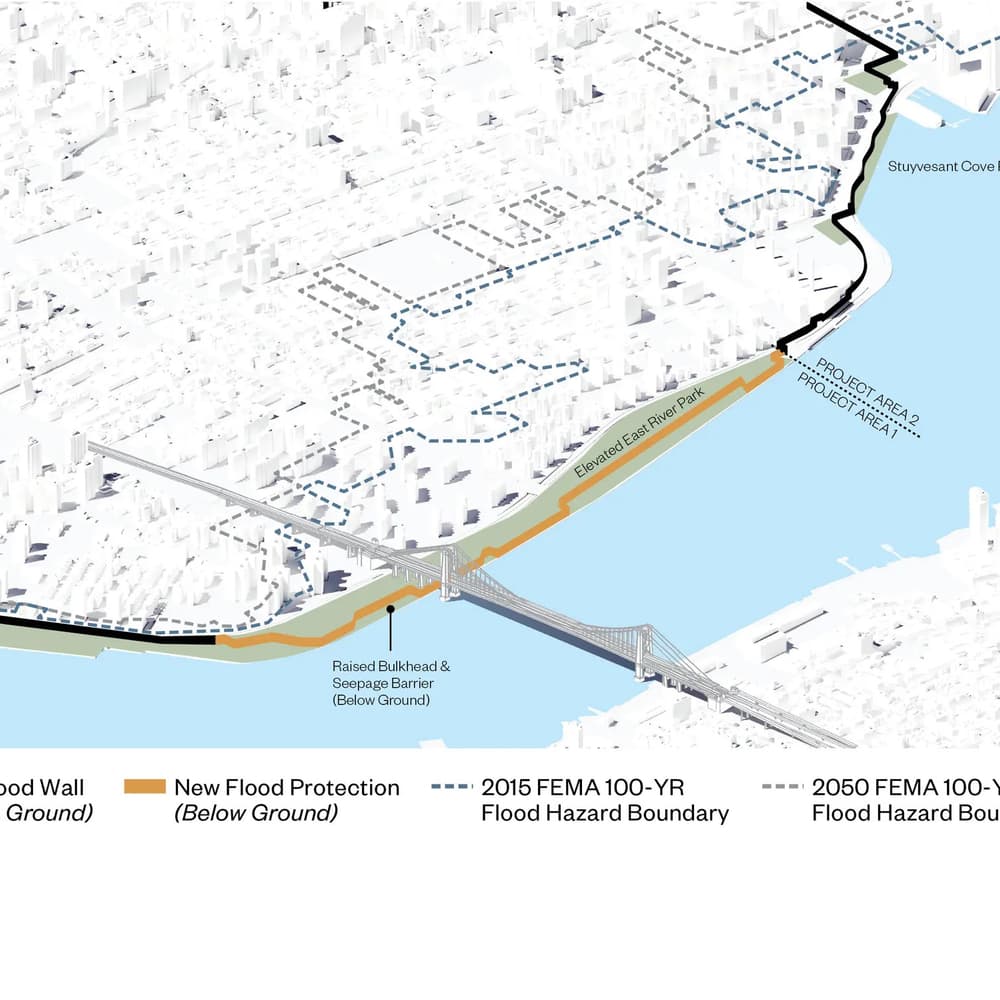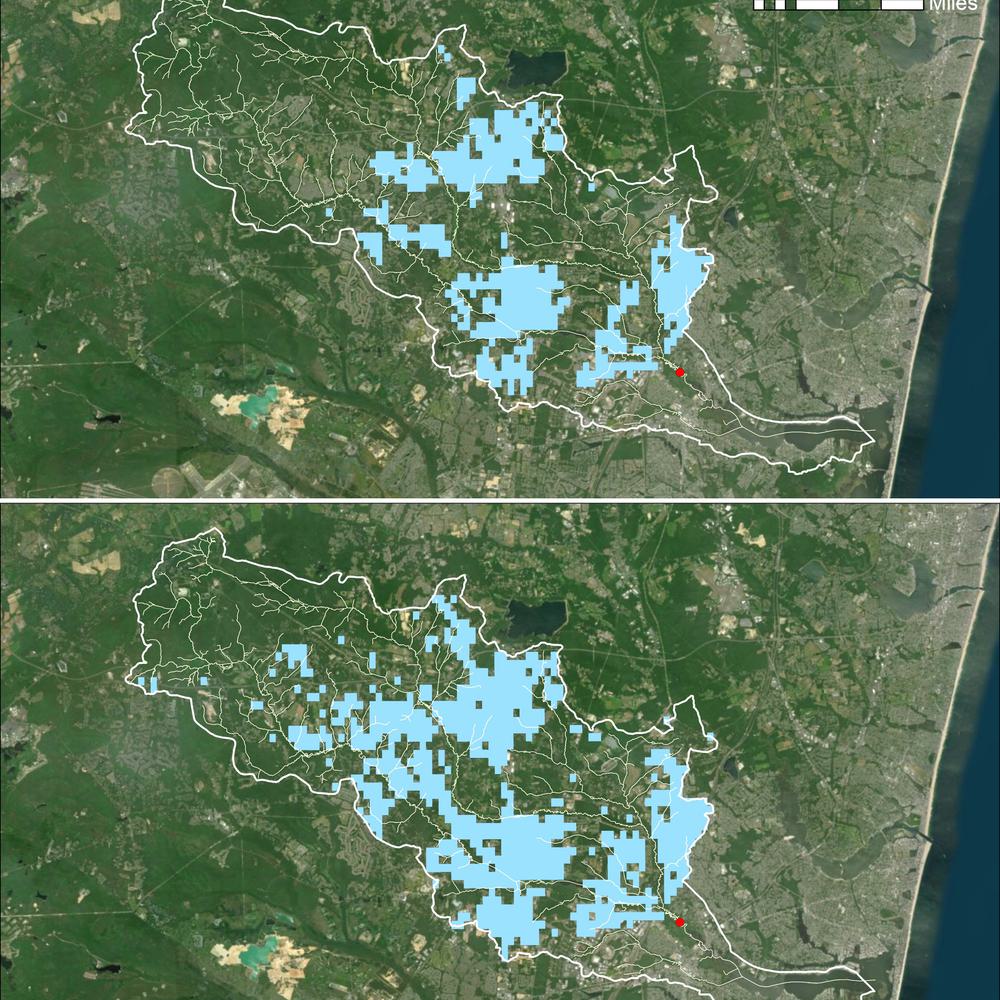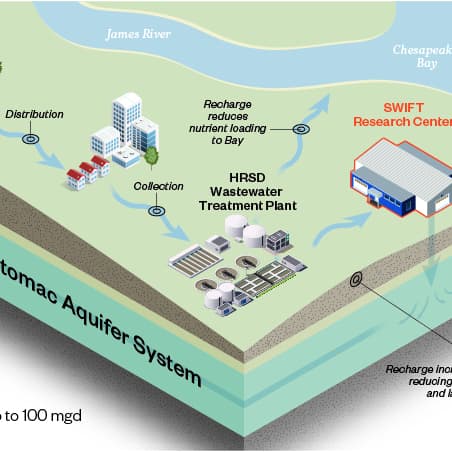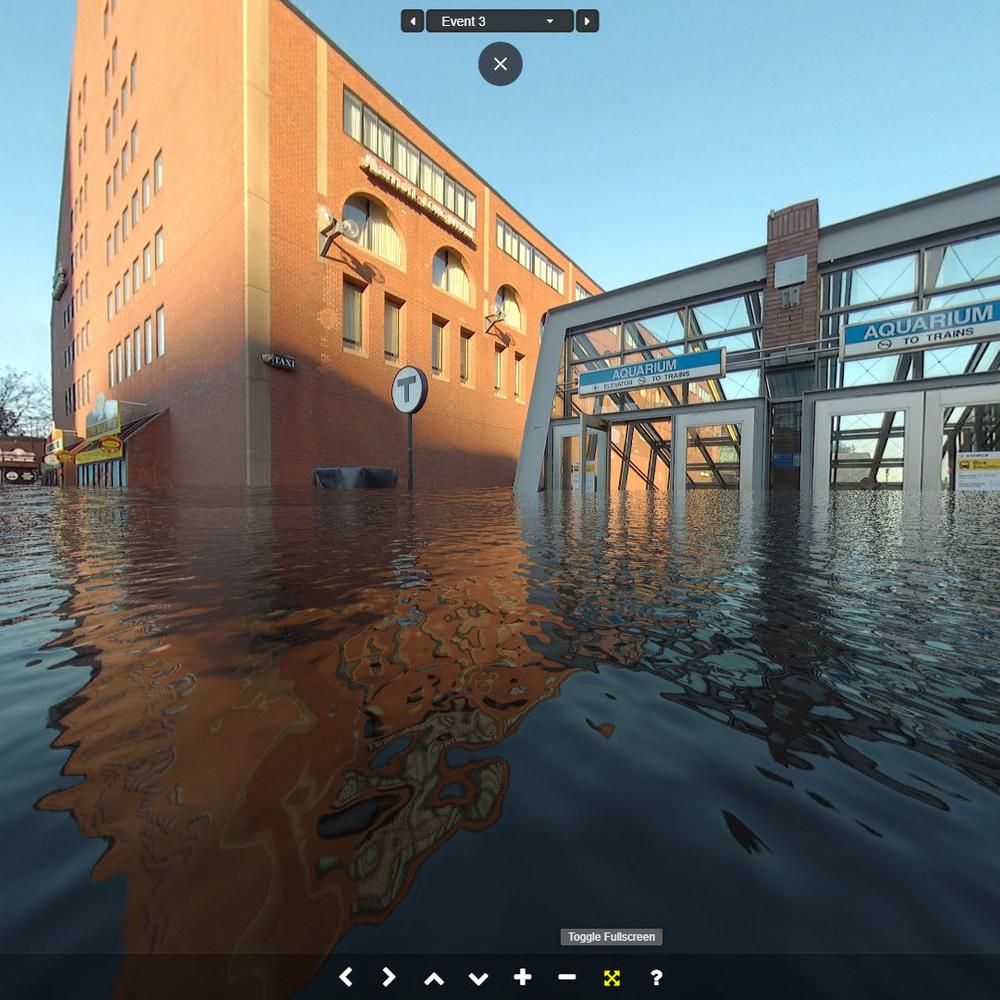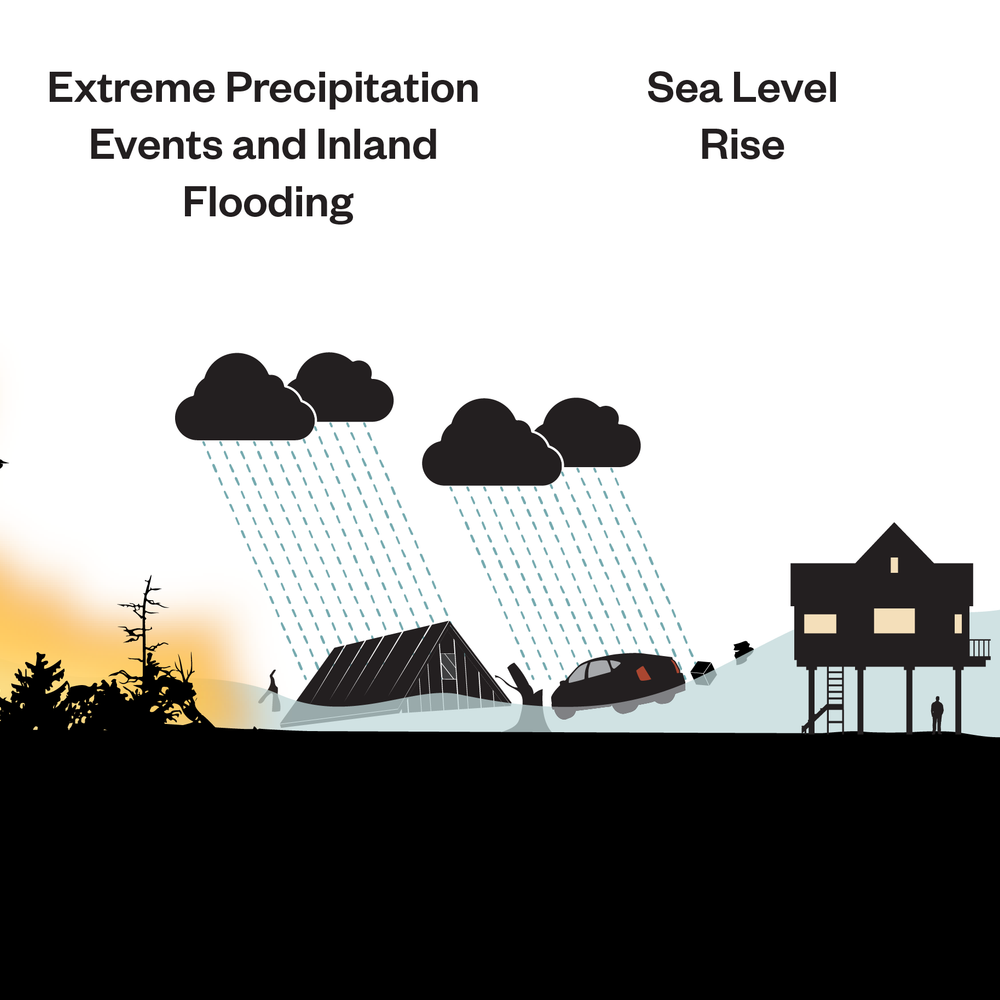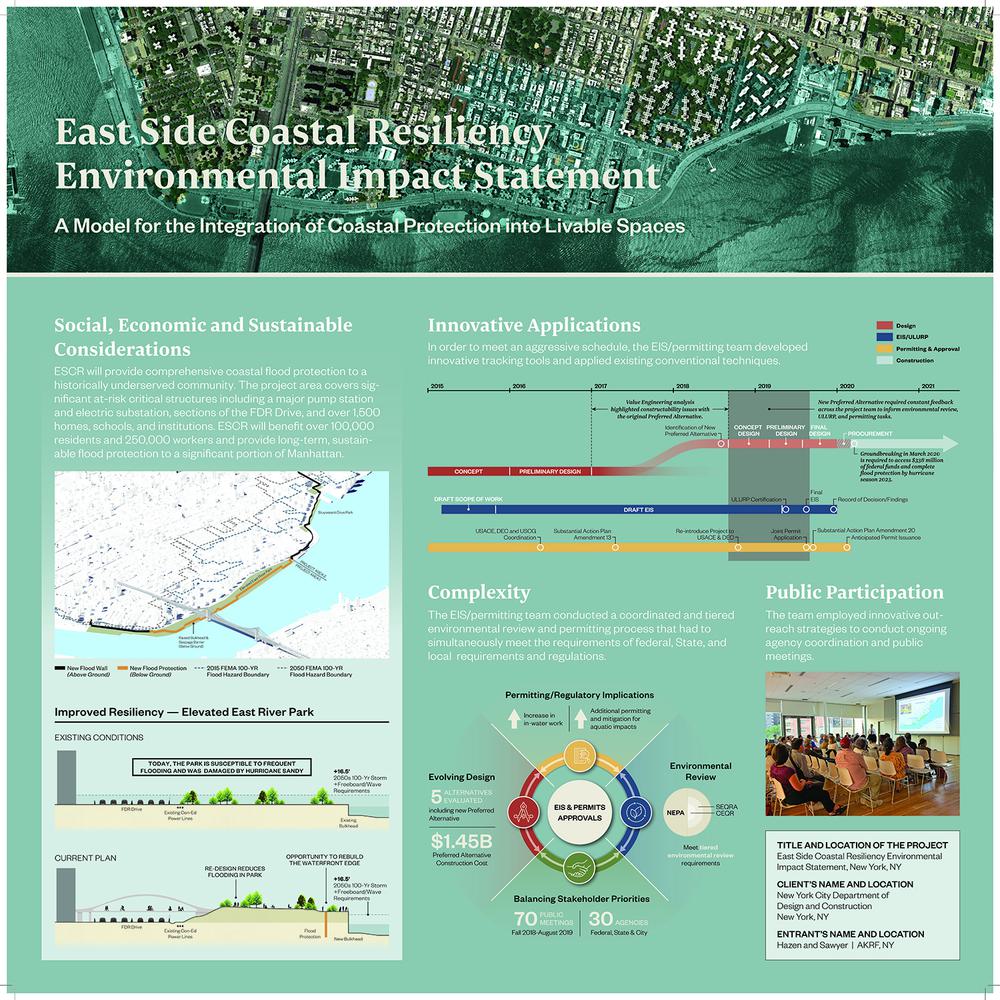OCSD Climate Resiliency and Adaptation Plan Named 2020 AAEES E3S Winner
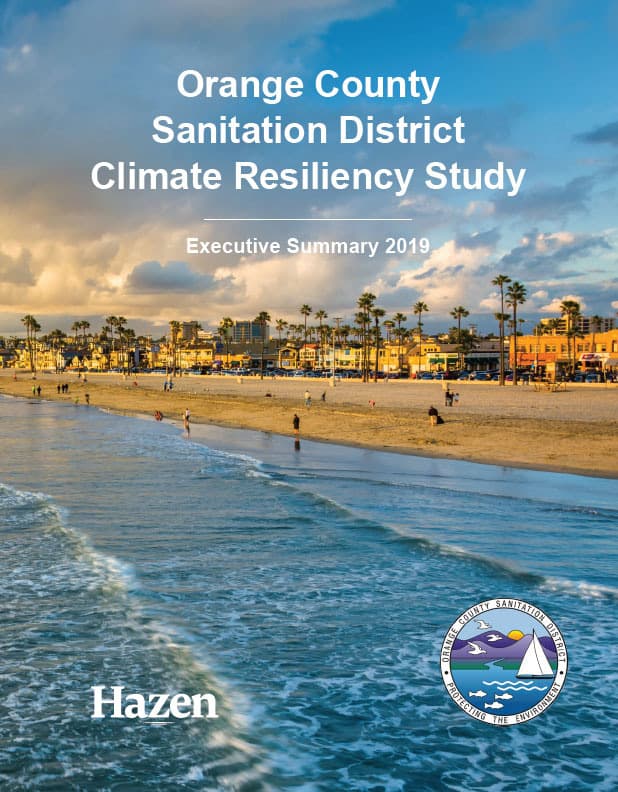
Download a copy of the executive summary of the Resiliency Plan.
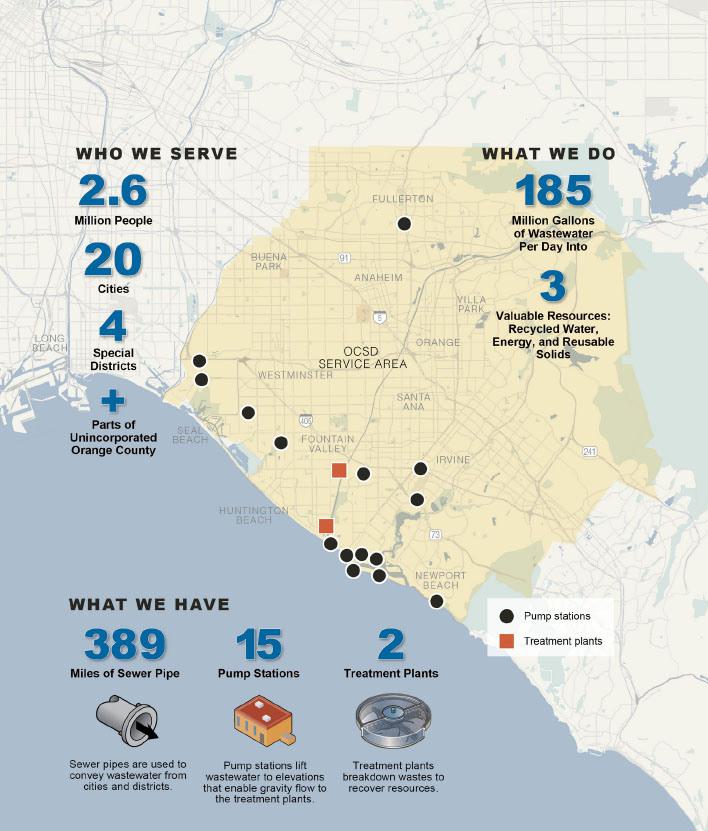
Orange County Sanitation District (OCSD)’s 479-square mile service area includes 396 miles of regional trunk sewers. Although all influent reaches the plants by gravity flow, 15 off-site lift pump stations are needed.

OCSD reviewed several key climate data and projections from international to regional level and used the latest published California’s 4th Climate Change Assessment as the basis of future projections.
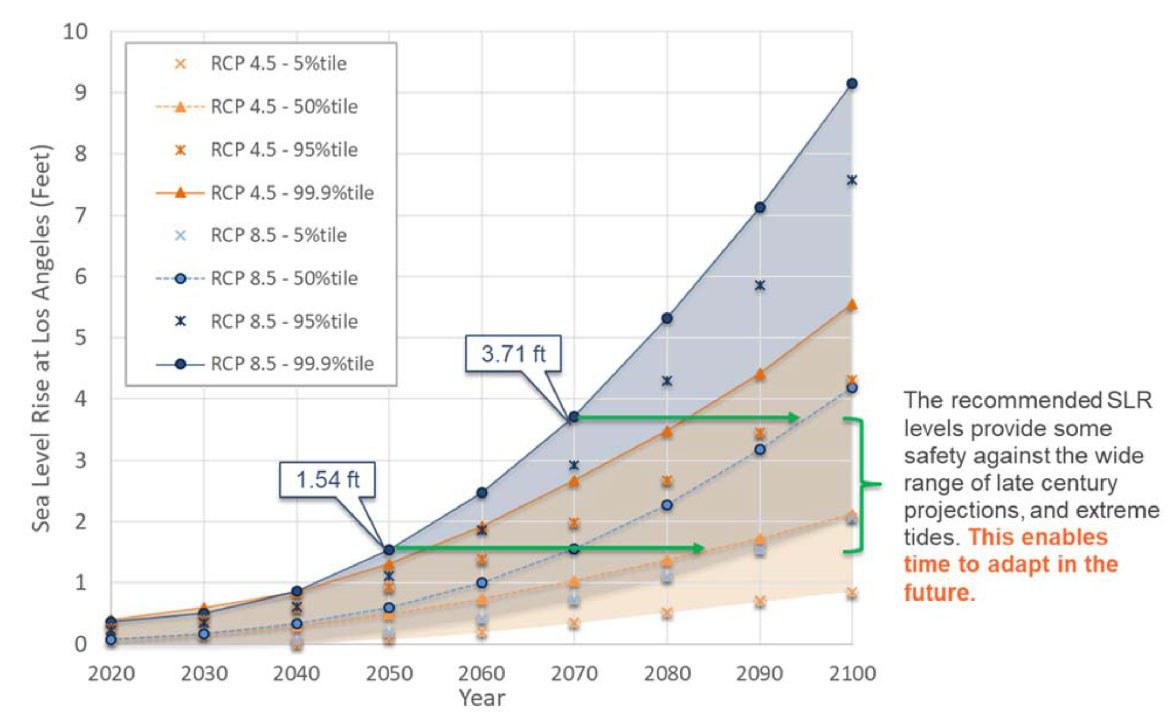
Sea Level Rise (SLR) projections for the Los Angeles region from California’s Fourth Assessment Report is used in the climate resiliency study.
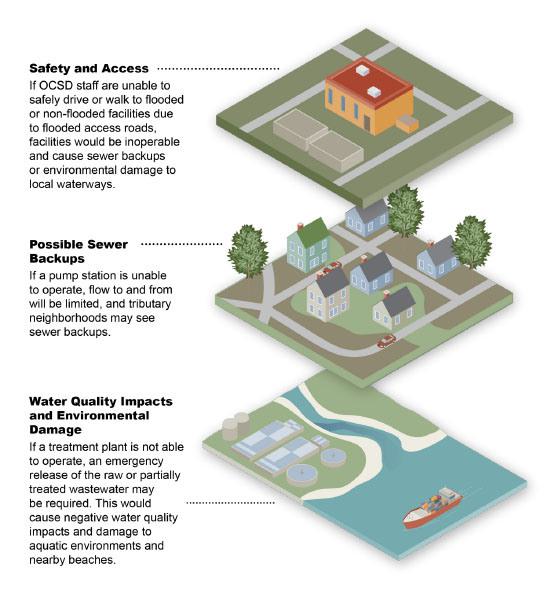
Impacts of flooding and tsunami on OCSD infrastructure include electrical or mechanical failure and unsafe conditions for operators and facility staff.

Flood pathways were identified for impacted building at OCSD’s Treatment Plant No. 2. Detailed cross-sections of impacted facilities and elevation of key assets were created to communicate the relationship between flood pathways and potentially impacted assets within those facilities.
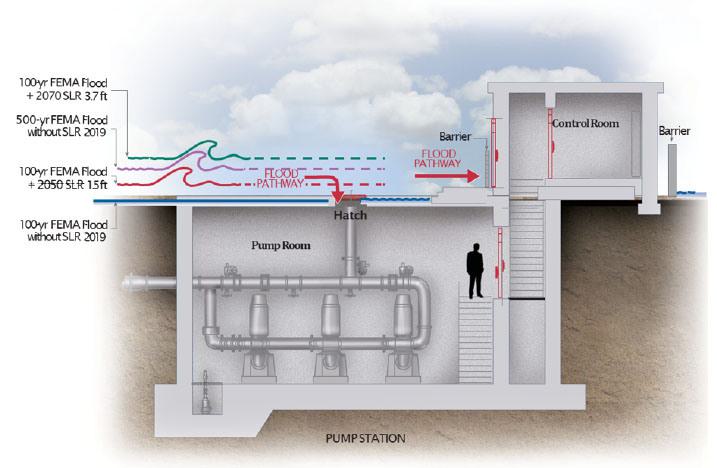
An example of facility level adaptation for a typical pump station that was considered in the study. Flood levels and flood pathways to the structure were considered in adaptation planning.
(LOS ANGELES, CA - April 20, 2020) - The Orange County Sanitation District (OCSD) Climate Resiliency and Adaptation Plan has been named the 2020 Excellence in Environmental Engineering and Science (E3S) Award Winner by the American Academy of Environmental Engineers and Scientists in the Planning category.
The OCSD Climate Resiliency and Adaptation Plan is one of the first projects in California, and Orange County specifically, to integrate the implications of climate change into improved design standards, emergency preparedness, and facility operations for the future.
To develop the plan, a multidisciplinary team at OCSD worked with Hazen to develop innovative solutions while referencing the latest developments in climate science and emergency preparedness. To minimize the risks posed by climate change, OCSD conducted a study that involved assessing and developing adaptations to mitigate those risks. Adaptations that would protect the highest value of assets while providing a high level of reliability at a reasonable cost, having minimal deployment requirements, and having few impacts on operability were identified.
While some regional water quality control boards are beginning to require climate resiliency plans for the National Pollutant Discharge Elimination System (NPDES) permit renewal, OCSD took the initiative to develop a climate resiliency and adaptation plan far in advance of the NPDES permit renewal in order to integrate climate resilience into the ongoing capital improvement plan to maximize public, staff, and environmental health and safety. As a result, climate resilience can be achieved while maintaining OCSD’s progress on the entire collection system and reclamation facilities.
The E3S Awards Competition exists to identify and reward the best of today's environmental engineering and science. The award criteria define what it takes to be the best in environmental engineering and science practices: a holistic environmental perspective, innovation, proven performance and customer satisfaction, and contribution to an improved quality of life and economic efficiency.





